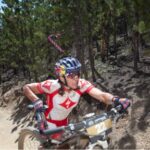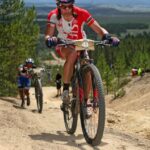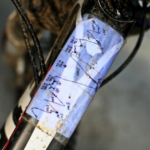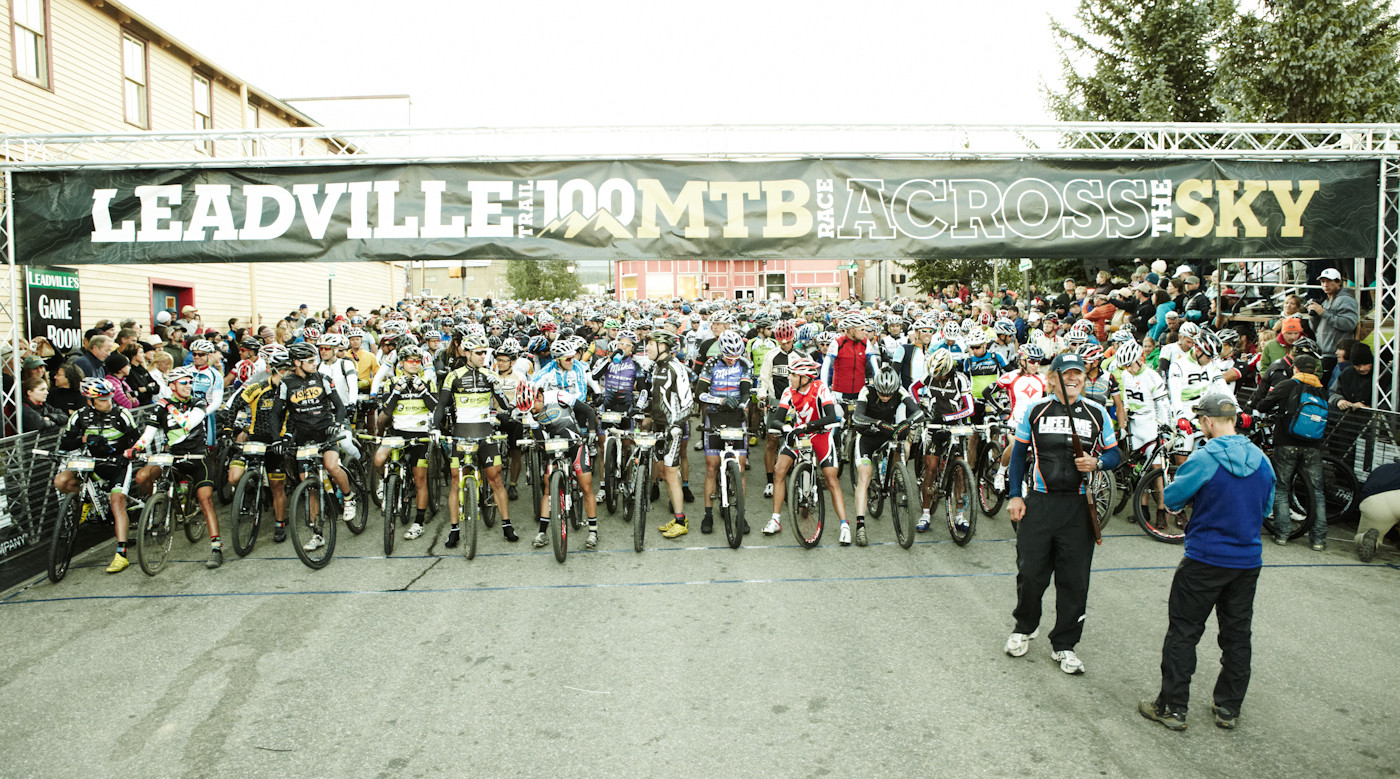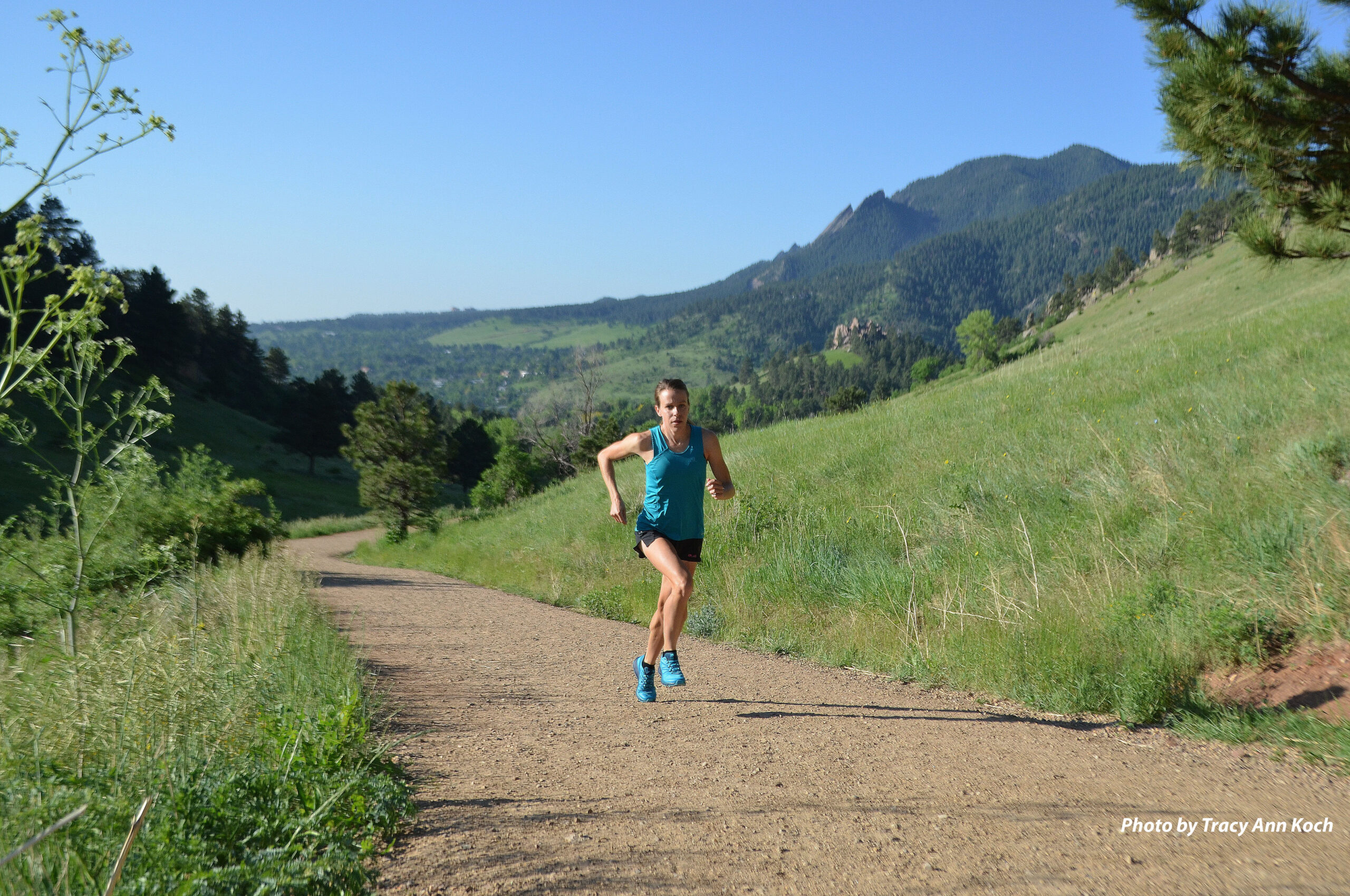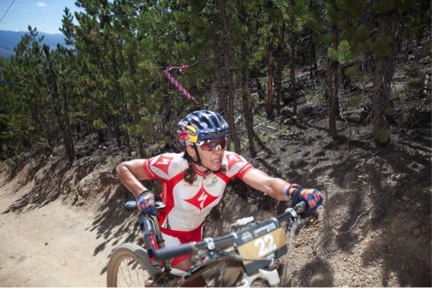
Dispatches from Leadville — Climbing Tips
By Rebecca Rusch
There’s no doubt about it, the Leadville Trail 100 MTB is a climbing course. The infamous climbs of Columbine and Powerline invoke fear in the hearts and lungs of many. Make no mistake – these are not the only two climbs on the course. Even the gentle grade of The Boulevard will crush your soul and slow your cadence to a halt after you’ve been up and over all of the biggies out there.
But don’t be afraid. All this means is that you must prepare for the climbing that awaits. Today I’m going to share some insights for improving your climbing, as well as some of my very own climbing tricks used on this very course.
Pedaling Technique
I’m a masher. I admit it. I started cycling later than most racers and I incorrectly believed that the harder I mashed on the pedals, the faster I would go. I’ve spent years trying to break this habit and I still fall back into it in moments of desperation.
You’ve all heard this before, but it’s most efficient to use all of your leg muscles to move the pedals in circles instead of just pressing down. It’s important to engage the hamstrings, hip flexors and glutes as well. I’ve done hours of one-legged drills on the trainer to try to develop a more efficient pedal stroke. These drills are tedious and feel completely ridiculous at first, but slowly your muscles adapt and soon you are pedaling circles instead of squares.
A good pedaling technique goes a long way toward climbing efficiency, especially on gentler grades like the lower segments of Columbine. During an event, I keep focused on a round pedal stroke by thinking about driving my knees to the handlebar to engage hips and pull up. I also visualize “fluffy socks” – imagining my sock under the ball of my foot can fluff up at least once per pedal stroke as the weight of my foot lightens in the shoe.
Upper Body Position
Climbing body position is all about maintaining even balance over the tires in order to maintain traction. The steeper the hill (like the 26% grade on lower Powerline), the more forward your body needs to be in order to keep traction on the front wheel. You can do this by sliding forward on your saddle and I also pull my chest forward and lower toward the handle bar. I keep my elbows in. If you need to pull back on the bar, you can. Again, this position is for aggressive, steep climbing.
Once the grade kicks back, adjust your position on the bike to be more neutral and relax your upper body and arms as much as possible. I focus on keeping my fingers loose or open on the bar so I’m not wasting energy that isn’t going directly to the pedals. Remember to relax your face and shoulders and take in full, energizing breaths.
Pacing
Smooth and steady is fast and efficient. Leadville is a race of attrition and nailing your own individual pacing is key. I’ve never taken the lead any earlier than Columbine. I’m always told, “You really speed up the second half of the course.”
While it is true that I typically pass people on the second half of the course instead of getting passed, it’s not because I’m going faster – it’s because I’ve stayed consistent and other riders missed the mark on their pacing. Yes, it’s a race and you are going to be putting in a hard effort, but keep in mind that recovery above 10,000 feet is just not going to happen like it does at lower elevations. Go into the red too many times and you cannot claw your way back out.
For me, with all of the climbing and the high elevation of this race, a consistent pace is far more successful than a fast start. Pacing for climbing is dependent on the length and steepness of the climb. No matter how short or long the climb, steady metered effort is always more efficient than fits and bursts of effort. Since Columbine is the longest climb of the race, I really focus on consistency here. I know approximately how long the climb takes and that it’s steeper at the top. On the lower sections I use my Garmin to watch my speed and focus on trying to go just .1 mile-per-hour faster by improving my pedal stroke. Then I try to maintain a consistent speed up to the tree line.
Gearing
Leadville is a challenging course to gear for because there are huge, steep climbs that require small gears and fast road sections where you want some bigger gears. This discrepancy makes it one of trickiest courses to plan for in the gear department.
My advice for anyone racing Leadville is to gear for the climbs. These are the places where the race is won and lost and where buckles are collected or not. Put your ego aside and gear appropriately for more than 10,000 feet of climbing all above 10,000 feet in elevation. Being able to stay on your bike and pedal efficiently (see cadence and technique above) will save energy and time in your race. If you are pushing too big of a gear for many of the climbs, you will pay dearly later after you’ve burned all of your matches before seeing the red carpet.
Course Knowledge and Training
Knowledge is power because it allows you to pace for the climbing ahead. If you don’t know whether a climb is five minutes or 50 minutes, it’s hard to know what pacing is best for you. It’s also mentally hard to stay in the game without knowing what’s coming.
If you’re not able to come out for Camp of Champions (although you should) or head to Leadville early to scout the course, that’s ok. My first year racing Leadville as a rookie, I hadn’t ridden one inch of the course before race day. But I did have a course profile with mileages and time estimates taped to my top tube. This way, I knew I could pace for the climbs ahead and knew how many big climbs were left. Now I can ride every inch of the course in my head.
Do your homework and look at profiles and time estimates and map out a plan for training and racing. Knowing that Columbine is more than 3,000 feet of climbing and Powerline is about 1,500 feet is a helpful tidbit to focus your training efforts on long climbs. Even if you live near small climbs, you can do them over and over until the climbing feet add up. There is no substitute for climbing, so find a way to put in some of these miles before race day. You will be happy you did.

